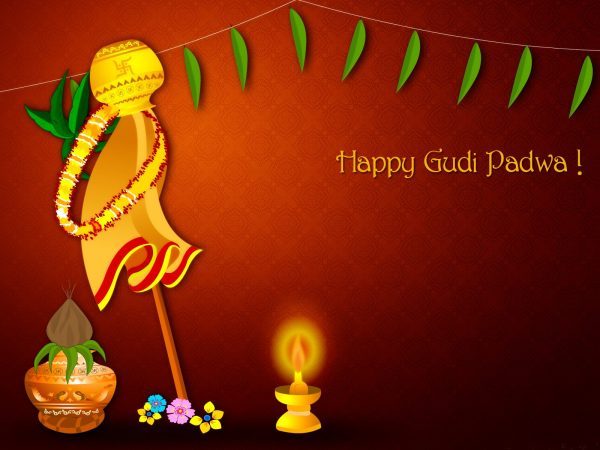The Hindu New Year is in two days. Known as Gudi Padwa, this is an auspicious festival and is celebrated according to the Hindu lunisolar calendar. It is considered to be the day of creation. According to legend, Lord Brahma recreated the world after the great flood and the point from which time itself began to tick. Celebrations include plenty of good food and special performances of folk dances like the Ranamale and the Veerabhadra. Gudi Padwa is celebrated all over Goa but is usually more concentrated in the Sanguem, Sattari, and Gaondongri areas with big dance performances and celebrations. Ganesh Chaturthi is possibly bigger. Gudi Padwa happens at the end of Shigmotsav.
Why is the festival called Gudi Padwa?
The word Gudi means flag. It refers to the flag that is erected on houses in Maharashtra where the festival is mainly celebrated. The word pāḍavā is derived from the Sanskrit word ‘pratipad’ for the first day of each fortnight in a lunar month i.e. the first day on which the moon appears after the so-called “new moon” day (amāvāsya) and the first day after the full moon. A Gudhi is also hoisted on this occasion giving this festival its name.
Gudi Padwa heralds the arrival of spring and the reaping of Rabi crops.
As mentioned, Legend says that the festival is connected to the day on which the Hindu God Brahma created the universe. Others say that it is the commemoration of the coronation of Lord Rama in Ayodhya after his victory over evil Ravana.
What is the Gudhi?
The gudhi is a special decoration which is used at this time. It consists of a bright yellow or saffron cloth which is adorned with gold zari (brocade) which is tied to the tip of a long bamboo. This is then covered with sugar crystals, neem leaves and a sprig of mango leaves along with a garland of flowers. The entire decoration is surmounted by a copper pot which is placed in an inverted position over the tip of the bamboo. (Source – GTDC – Gudi Padwa)
This Gudhi is then tied outside the house, generally on a window or front but always on the right side of the main entrance. It is a symbol of many things, including; The victory of King Shalivahana over Sakas and was hoisted by his people when he returned to Paithan.
History also tells us that the Gudhi also symbolizes Lord Rama’s victory and happiness on returning to Ayodhya after slaying Ravana. It’s the same as holding a victory flag up high, as done with the gudhi. Gudi Pawa is therefore celebrated to remember the coronation of Lord Rama on his return to Ayodhya after 14 years of exile. The gudhi is also believed to ward off evil, invite prosperity and good luck into the house.
What do people do on Gudi Padwa?
Gudi Padwa is an auspicious occasion. It is considered the right time to begin new ventures and life journeys like businesses, religious studies, and even marriage. In Goa, people call the festival Samvatsar Padvo. The day before is a day of extensive spring cleaning. The gudhi is hung outside. Village households sweep their courtyards and plaster them with fresh cow-dung. Special food and drink are prepared for the occasion along with delicious sweets.
As this is a time of new beginnings, people wear new clothes and decorate their homes with pretty, intricate Rangoli designs. This is more visible in the villages, where people follow traditions more devoutly.
Special food on Gudi Padwa
As with all Indian festivals, special food and drinks are a big part of the festivities. Gudi Padwa is no different with dishes like pooris, Puranpolis, Shrikhand (sweetened hung curd) and Kanangachi Kheer (which is a specialty in Goa). This kheer is made using sweet potato, coconut milk, jaggery, rice flour, etc.
Gudi Padwa isn’t celebrated on as big a scale as Ganesh Chaturthi and Diwali are but it is still an important festival to the Hindu community. And keeping this in mind, we wish each and everyone celebrating a Happy Gudi Padwa filled with blessings and prosperity.
For more information on the festival, check out the Speaking Tree’s article.
Information credit – Wikipedia/ GTDC – Gudi Padwa
ItsGoa/MAR/KDGP


